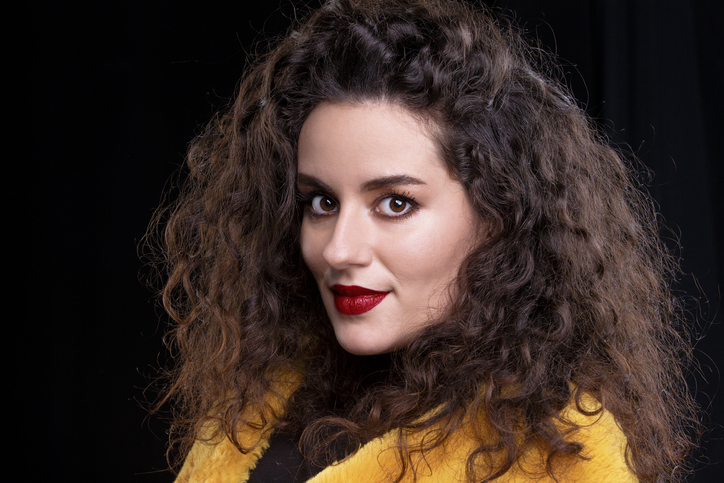News
Mystery Revealed: The Tradition of Orthodox Women Wearing Wigs
In the vibrant tapestry of cultural and religious traditions, there often lie hidden gems of practices that captivate the curious mind. Today, we delve into a centuries-old enigma that intrigues many – the tradition of Orthodox women donning wigs. Picture a world where custom intertwines with faith, where modesty meets symbolism in a fascinating display of devotion. The allure of understanding the ‘why’ behind this custom proves irresistible, drawing us into a realm where history, belief, and personal expression converge. As we peel back the layers of this intriguing tradition, we unearth a rich tapestry of stories, beliefs, and societal norms that have shaped the practice of Orthodox women wearing wigs. Beyond the surface-level understanding, a deeper narrative unfolds, woven with threads of cultural heritage and spiritual significance. Join us on a journey through time and tradition as we unravel the mystery behind why Orthodox women choose to embrace this unique sartorial custom. Let’s embark on a quest to unravel the cultural nuances and profound meanings that underpin the age-old practice of Orthodox women adorning themselves with wigs.
Origins and History of Wig-Wearing Among Orthodox Women
The tradition of Orthodox women wearing wigs dates back centuries, with its roots deeply embedded in religious and cultural history. To understand its origins, we must delve into the historical context of the practice. In ancient times, hair was considered a symbol of beauty and sensuality. To maintain modesty and adhere to religious principles, Orthodox women began covering their natural hair with wigs.
This practice gained prominence during the Byzantine era when societal norms dictated that women should conceal their hair in public. Wigs became a way for women to comply with these expectations while still maintaining a sense of style and femininity. Over time, wig-wearing evolved from a mere fashion statement to an integral part of Orthodox tradition.
Symbolism and Significance of Wigs in Orthodox Tradition
Wigs hold deep symbolism within the Orthodox tradition, representing humility, modesty, and devotion to God. By covering their natural hair, Orthodox women demonstrate their commitment to leading a pious life focused on spiritual pursuits rather than worldly vanity.
The act of wearing a wig also serves as a visual reminder for women to prioritize inner beauty over external appearances. It encourages them to cultivate virtues such as kindness, compassion, and humility while distancing themselves from societal pressures associated with physical attractiveness.
Evolution of Wig Styles and Materials Over Time
Throughout history, wig styles and materials have undergone significant transformations. In earlier times, wigs were typically made from human hair or animal fibers such as horsehair or goat hair. These wigs were often elaborate in design, featuring intricate braids or curls.
In modern times, synthetic materials have become more prevalent due to their affordability and versatility. Synthetic wigs offer a wide range of styles and colors while requiring less maintenance compared to natural hair wigs. However, some Orthodox women still prefer the authenticity and natural feel of human hair wigs.
Cultural Influences on the Practice of Orthodox Women Wearing Wigs
The practice of wig-wearing among Orthodox women has been influenced by various cultural factors throughout history. In regions where Orthodox communities reside, local customs and traditions have shaped the specific styles and designs of wigs worn by women.
For example, in Eastern European countries, such as Russia and Ukraine, wigs often feature intricate braids adorned with ribbons or flowers. In contrast, in Middle Eastern countries with Orthodox populations, wigs may be more modest in design, reflecting the cultural norms of those regions.
Religious Interpretations and Scriptural References
The decision to wear a wig is deeply rooted in religious interpretations and scriptural references within the Orthodox faith. While there is no direct mention of wig-wearing in religious texts, certain passages emphasize the importance of modesty and humility.
Orthodox women interpret these teachings as a call to cover their natural hair as an act of devotion to God. By adhering to this practice, they believe they are following the path set forth by their religious leaders and ancestors who have upheld this tradition for generations.
Modern Perceptions and Controversies Surrounding Wig-Wearing
In modern times, the practice of Orthodox women wearing wigs has garnered both admiration and controversy. Some view it as a beautiful expression of faith and tradition, while others criticize it as an outdated custom that perpetuates gender inequality or places undue emphasis on physical appearance.
It is essential to approach these discussions with sensitivity and respect for diverse perspectives. Understanding the historical context and personal beliefs behind wig-wearing can help foster meaningful conversations that bridge the gap between different viewpoints.
The Process of Selecting and Maintaining Orthodox Wigs
Selecting and maintaining an Orthodox wig is a meticulous process that requires careful consideration. When choosing a wig, factors such as hair color, length, and style are taken into account to ensure it aligns with personal preferences and cultural norms.
Once a wig is selected, proper maintenance is crucial to preserve its quality and appearance. This includes regular cleaning, styling, and storing in a way that prevents damage or tangling. Many Orthodox women seek professional assistance from wig stylists who specialize in catering to their unique needs.
Impact of Globalization on the Traditional Practice
The advent of globalization has brought both challenges and opportunities for the traditional practice of Orthodox women wearing wigs. As communities become more interconnected, there is increased exposure to diverse cultural practices and fashion trends.
While some argue that globalization may dilute or erode traditional customs, others believe it offers an opportunity for cultural exchange and adaptation. The influence of global fashion trends can be seen in the emergence of modern wig styles that blend traditional elements with contemporary aesthetics.
Empowerment and Identity: Perspectives of Orthodox Women on Wigs
For many Orthodox women, wearing a wig is not just a religious obligation but also an empowering choice that allows them to express their identity. It provides them with a sense of belonging within their community while enabling them to maintain their individuality.
Orthodox women often take pride in selecting wigs that reflect their personal style while adhering to modesty guidelines. They view this practice as an opportunity for self-expression within the boundaries set by their faith.
Unveiling the Beauty and Mystery: Conclusion
The tradition of Orthodox women wearing wigs is a captivating tapestry woven with history, symbolism, and personal beliefs. It is a practice that continues to evolve and adapt to the changing times while remaining deeply rooted in religious devotion.
By understanding the origins, significance, and cultural influences behind wig-wearing, we gain insight into the multifaceted nature of this tradition. It reminds us of the beauty that lies within diversity and the profound ways in which faith can shape personal expression.
As we conclude our exploration of this enigmatic custom, let us embrace the opportunity to learn from one another’s traditions and celebrate the rich tapestry of human experiences that make our world truly remarkable.


